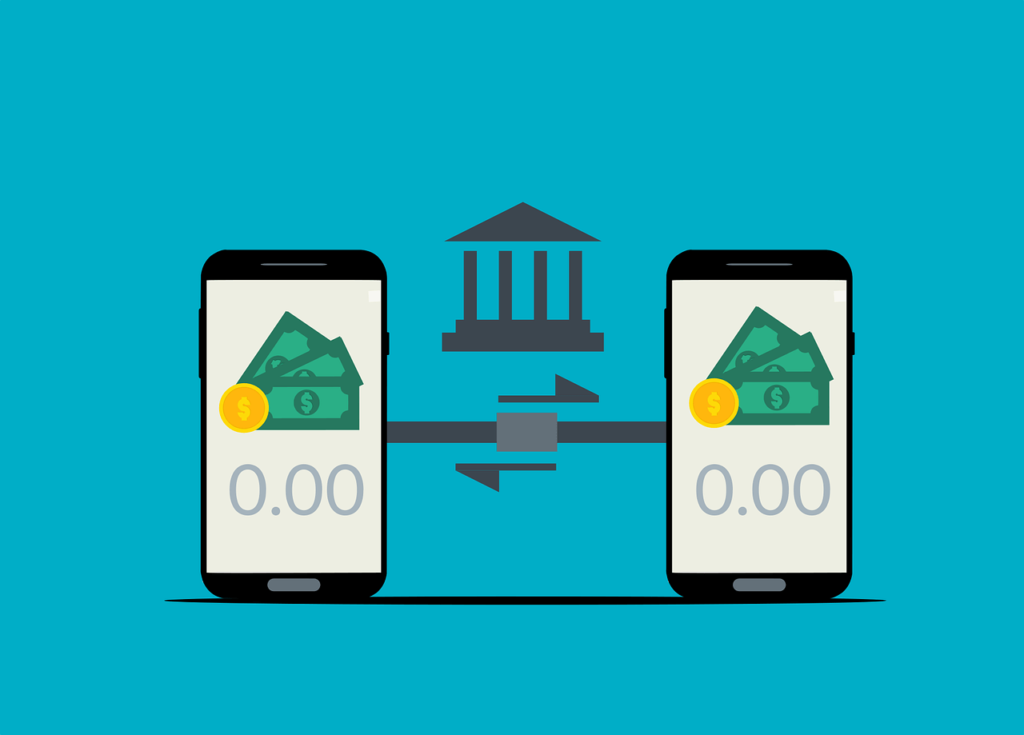Making payments is an integral part of any business operations, and having an efficient payment process is essential in ensuring customer satisfaction, reducing costs, and streamlining the overall operations. Streamlining your payment process can have a number of benefits, and in this article, we will discuss some tips and best practices that can help you do so.
I. Introduction
A. Explanation of why a streamlined payment process is important
One of the key ways to streamline your payment process is to digitize it. By adopting digital payment methods, businesses can save time and money compared to traditional payment methods like cash or check. Digital payment methods, such as e-wallets, credit and debit cards, and online payment platforms, can help streamline the payment process by reducing the need for manual data entry, minimizing paperwork, and simplifying the payment process for both customers and businesses.
Another tip for streamlining the payment process is to automate it as much as possible. Automated payment systems can help reduce errors and ensure that payments are processed quickly and accurately. This can include setting up automatic payment reminders, enabling recurring payments, and using payment processing software to automatically reconcile transactions.
It’s also important to offer multiple payment options to customers. By offering a range of payment options, businesses can cater to the diverse preferences of their customers, whether it’s through e-wallets, credit and debit cards, or online payment platforms. This can help improve customer satisfaction and reduce the likelihood of payment disputes.
To further optimize the payment process, businesses should consider integrating payment systems with other business software, such as accounting software and customer relationship management systems. This can help automate payment-related tasks, reduce errors, and simplify the payment process by providing a single source of truth for payment-related data.
Finally, businesses should prioritize security when streamlining their payment process. Implementing security measures such as encryption and two-factor authentication can help ensure that payment information remains secure and reduce the risk of fraud or data breaches. It’s also important to stay up-to-date with industry regulations and compliance requirements, such as PCI DSS, to ensure that payment processes are secure and compliant.
Therefore, streamlining your payment process can have a significant impact on your business’s operations, customer satisfaction, and profitability. By adopting digital payment methods, automating payment systems, offering multiple payment options, integrating payment systems with other software, and prioritizing security, businesses can optimize their payment process and reap the benefits.
B. Brief overview of the article’s tips and best practices
Automating payment processing tasks is an effective way to streamline the payment process. This includes automating tasks such as invoicing, payment reminders, and payment processing. By automating these tasks, businesses can reduce manual errors, improve efficiency, and save time and money.
Integrating payment systems with other business software is another way to streamline the payment process. This includes integrating payment systems with accounting software, customer relationship management (CRM) software, and other business applications. By integrating payment systems with other software, businesses can improve visibility into payment data, reduce duplicate data entry, and improve overall efficiency.
Implementing mobile payments and e-wallets is also becoming increasingly popular for businesses looking to streamline their payment process. This includes allowing customers to make payments using their mobile devices or e-wallets such as Apple Pay or Google Wallet. This can help improve the customer experience by offering more payment options and can also reduce the risk of fraud as payments can be tracked and verified.
Ensuring data security is crucial when streamlining the payment process. This includes implementing secure payment gateways, using encryption for sensitive data, and regularly monitoring for suspicious activity. Businesses should also ensure compliance with industry regulations such as the Payment Card Industry Data Security Standard (PCI DSS) to prevent data breaches and protect customer information.
Monitoring and analyzing payment data is another important aspect of streamlining the payment process. By monitoring payment data, businesses can identify patterns, trends, and areas for improvement. This can help businesses optimize their payment process and make data-driven decisions.
Providing exceptional customer support is also essential for businesses looking to streamline their payment process. This includes offering multiple payment options, providing clear and concise payment instructions, and offering prompt customer support in case of any payment issues. By providing exceptional customer support, businesses can improve the customer experience and build trust and loyalty with their customers.
In essence, streamlining the payment process is essential for any business looking to improve efficiency, reduce costs, and enhance the customer experience. By following these tips and best practices, businesses can optimize their payment process and stay ahead of the competition.
II. Analyzing Your Current Payment Process
A. Steps involved in the current payment process
Once you have identified the steps involved in the payment process, it’s time to assess each step and determine where bottlenecks or inefficiencies may exist. For example, are there any manual steps that can be automated to save time and reduce errors? Are there any unnecessary steps that can be eliminated without impacting the overall process?
One common way to streamline payment processing is through automation. Automating payment processing tasks can save time and reduce errors by eliminating manual data entry and other manual tasks. For example, using automated invoicing and billing software can help businesses generate and send invoices automatically, reducing the need for manual data entry and saving time.
Another important consideration when streamlining your payment process is integrating payment systems with other business software. By integrating payment systems with other software, businesses can improve efficiency and reduce errors. For example, integrating payment systems with accounting software can help ensure accurate financial reporting and simplify the reconciliation process.
Implementing mobile payments and e-wallets can also help streamline the payment process. These payment options offer customers a convenient and secure way to pay, and can help reduce the time and effort required to process payments. By offering customers multiple payment options, businesses can also increase customer satisfaction and reduce the risk of payment delays or disputes.
Ensuring data security is also an important consideration when streamlining your payment process. Businesses need to ensure that payment data is stored and transmitted securely, and that they are compliant with industry regulations such as PCI DSS. Regularly monitoring and analyzing payment data can also help businesses identify and prevent potential fraud or security breaches.
Finally, providing exceptional customer support is crucial for maintaining a streamlined payment process. This includes offering multiple channels for customers to reach out for help or support, such as phone, email, or live chat. Businesses should also aim to respond promptly to customer inquiries or issues related to payment processing.
By following these tips and best practices, businesses can streamline their payment process, reduce costs, improve the customer experience, and optimize overall operations.
B. Identifying inefficiencies or pain points in the process
Identifying inefficiencies and pain points is crucial to streamline the payment process. One common issue in payment processes is a high level of friction, which can be caused by asking customers for too much information during the checkout process. This can lead to cart abandonment and a negative customer experience. To address this, businesses should only collect the necessary information and reduce the number of steps required to complete the payment.
Another issue is the reliance on manual processes, which can slow down the payment process and increase the likelihood of errors. For instance, manually entering payment information can lead to typos and other errors that may cause delays in processing payments. To address this, businesses can automate payment processing tasks using payment gateway software that can automatically process payments and reduce the risk of errors.
Moreover, businesses should examine if there are any steps in the payment process that are taking too long. For example, waiting for a manual approval of a payment or for a check to clear can significantly slow down the payment process. To reduce these delays, businesses can consider implementing faster payment options such as electronic fund transfers (EFTs) or mobile payments.
In summary, analyzing the current payment process helps identify inefficiencies and pain points. This step is essential for streamlining the payment process and providing a better customer experience.
C. Assessing customer feedback on the current process
In addition to analyzing the current payment process and identifying inefficiencies or pain points, it is also important to consider customer feedback on the current payment process. Customers are the ones who interact with the payment process directly, so their feedback is invaluable in identifying areas that need improvement.
One way to gather customer feedback is through surveys or feedback forms. These can be sent out after a payment has been made or after a customer has interacted with the payment process in some way. Be sure to ask specific questions about the payment process, such as whether it was easy to use, if there were any issues or errors, and if there were any areas that could be improved.
Another way to gather feedback is to monitor social media and review sites. Customers often turn to these platforms to share their experiences with a business and its payment process. Pay attention to comments and reviews and respond to any negative feedback in a timely and professional manner.
By assessing customer feedback, businesses can identify pain points and areas that need improvement in the payment process. This can lead to a better overall customer experience, which can in turn increase customer loyalty and satisfaction.
III. Tips for Streamlining Your Payment Process
A. Automating payment processing tasks
Automating payment processing tasks can provide many benefits for businesses looking to streamline their payment process. By automating repetitive tasks such as invoicing and payment processing, businesses can save time and reduce the risk of errors. Automating these tasks can also help ensure that payments are processed quickly and accurately, which can improve the overall customer experience.
One way to automate payment processing tasks is to use payment processing software or payment gateways. Payment processing software can help streamline the payment process by automating the payment processing tasks, including payment authorization, verification, and settlement. Payment gateways can also help simplify the payment process by allowing businesses to accept payments securely and efficiently through various channels, including mobile devices and online payment platforms.
Another way to automate payment processing tasks is to integrate payment systems with other business software, such as accounting software. By integrating payment systems with accounting software, businesses can automate the recording of payments and improve financial management processes. This can help reduce the need for manual data entry, which can save time and reduce the risk of errors.
Overall, automating payment processing tasks can help businesses reduce costs, save time, and improve the overall payment process. By leveraging payment processing software and payment gateways, businesses can streamline payment processing tasks and ensure that payments are processed quickly and accurately. Integrating payment systems with other business software can also help improve financial management processes and reduce the need for manual data entry.
B. Integrating payment systems with other business software
Integrating payment systems with other business software can also help ensure accuracy and consistency in payment processing. By connecting payment systems with accounting software, businesses can automatically record payment transactions, reducing the risk of errors and minimizing the need for manual data entry. This integration can also help with reconciliation and financial reporting, allowing businesses to quickly and accurately track their financial performance.
Integrating payment systems with other business software can also help improve the customer experience. For example, integrating payment systems with a CRM system can provide businesses with a 360-degree view of customer interactions, enabling them to provide personalized payment experiences and targeted marketing campaigns. Customers can benefit from a more seamless payment process, which can increase customer satisfaction and loyalty.
It is important to note that when integrating payment systems with other business software, it is crucial to ensure that the systems are compatible and that data is transferred securely. Businesses should work with their payment system provider and software vendors to ensure that the integration is seamless and secure.
Overall, integrating payment systems with other business software can have numerous benefits for businesses looking to streamline their payment process, improve accuracy, and enhance the customer experience.
C. Implementing mobile payments and e-wallets
Mobile payments and e-wallets are becoming increasingly popular among customers due to their convenience and security features. By implementing these payment methods, businesses can provide customers with a quick and seamless payment experience. Mobile payments allow customers to use their mobile devices to make payments, either through a mobile app or by scanning a QR code. E-wallets, on the other hand, allow customers to store their payment information securely on their mobile devices, making it easier to make payments with just a few clicks.
Implementing mobile payments and e-wallets can help streamline the payment process by reducing checkout times. Customers no longer need to spend time entering their payment information manually, which can be particularly time-consuming on mobile devices. With mobile payments and e-wallets, customers can simply select their preferred payment method and complete the payment in a matter of seconds. This can help improve customer satisfaction by providing a fast and convenient payment experience.
Get A Free Consultation
Book a free call with us to discuss how we can help you expand in new regions, scale, and get the cash flowing in your business.
In addition, mobile payments and e-wallets can also help reduce the risk of payment fraud. These payment methods typically use encryption and other security measures to protect sensitive payment information, making it more difficult for fraudsters to access this information. This can help increase trust in the payment process and reduce the risk of chargebacks and other payment disputes.
Overall, implementing mobile payments and e-wallets can help businesses streamline their payment process, reduce checkout times, improve customer satisfaction, and reduce the risk of payment fraud. However, it is important to ensure that these payment methods are secure and compliant with industry regulations before implementing them.
D. Simplifying checkout processes
Simplifying checkout processes can also help streamline the payment process. By reducing the number of steps required to complete a purchase and removing any unnecessary fields, you can make the checkout process smoother and faster. This can help reduce checkout times and improve customer satisfaction.
E. Reducing payment processing fees
One way to reduce payment processing fees is to shop around for payment processors that offer competitive rates and fees. Many payment processors offer different pricing models, so it is important to compare them to find the one that best fits your business needs. Some processors may charge a flat rate per transaction, while others may charge a percentage of the transaction amount.
Another way to reduce payment processing fees is to negotiate with existing payment processors. If you have been with a payment processor for a while and have a good payment history, you may be able to negotiate a lower fee. Before negotiating, be sure to research the current market rates to ensure that you are getting a fair deal.
In addition to negotiating fees, it may be worth considering alternative payment methods that have lower processing fees. For example, ACH (Automated Clearing House) payments typically have lower fees than credit card payments. By offering multiple payment options to customers, you may be able to encourage them to choose the payment method with the lowest fees, helping to reduce costs for your business.
Reducing payment processing fees is not only a cost-saving measure, but it can also help streamline the payment process. By using a payment processor with competitive rates and fees, or negotiating lower fees with an existing processor, you can simplify the payment process and reduce the administrative burden of managing payments.
F. Outsourcing payment processing to a third-party provider
Outsourcing payment processing to a third-party provider is another way to streamline the payment process. Doing so can help reduce the administrative burden of managing payments and can also help ensure compliance with industry regulations. Additionally, outsourcing payment processing can help reduce costs and improve the overall efficiency of the payment process.
IV. Best Practices for a Streamlined Payment Process
A. Providing a variety of payment options
Offering a variety of payment options can also help businesses reach a wider customer base by catering to the preferences of different customers. For example, some customers may prefer to use credit cards, while others may prefer to use e-wallets. By offering multiple payment options, businesses can accommodate the preferences of their customers and make it easier for them to complete their transactions.
Furthermore, it’s important for businesses to make the payment process as seamless and user-friendly as possible. This means minimizing the number of steps required to complete a transaction, ensuring that the checkout process is easy to navigate, and providing clear instructions for customers. A confusing or complicated checkout process can lead to cart abandonment and lost sales, so it’s essential to make the payment process as simple and straightforward as possible.
Finally, providing exceptional customer support can help ensure that the payment process runs smoothly and that customers have a positive experience. This includes providing support for any issues or questions that may arise during the payment process, as well as providing clear communication about the status of payments and refunds. By offering responsive and helpful customer support, businesses can build trust with their customers and improve the overall payment experience.
B. Ensuring data security and compliance with regulations
To ensure data security and compliance with industry regulations, businesses should use secure payment processing systems that are PCI DSS compliant. The PCI DSS is a set of standards that all businesses that accept credit card payments must comply with to ensure the protection of customer payment data. PCI DSS compliance includes measures such as secure storage and transmission of payment data, regular vulnerability scans and penetration testing, and strict access controls.
In addition to PCI DSS compliance, businesses should also consider implementing other security measures such as encryption, two-factor authentication, and fraud detection systems. These measures can help reduce the risk of payment fraud and protect customers’ payment information.
It is also important to stay up to date with relevant industry regulations and ensure that your payment process is compliant with any changes or updates. Failure to comply with industry regulations can result in fines and other penalties, as well as damage to your reputation.
Finally, businesses should regularly monitor and analyze payment data to identify any suspicious activity or anomalies. This can help detect potential security breaches or fraud and allow businesses to take appropriate action.
C. Testing and refining the payment process regularly
Regular testing and refinement of the payment process is crucial to ensure that it remains efficient and effective. This can involve conducting regular testing of the payment system to identify any glitches or errors that may be affecting the process. For instance, you can test the payment process by making a test purchase to see if the system is working as expected. If you find any issues, take immediate action to resolve them.
Monitoring customer feedback is also an essential part of refining the payment process. This can involve collecting feedback from customers through surveys or feedback forms, or by monitoring customer reviews and social media comments. Use this feedback to identify areas where customers are experiencing difficulties or frustration with the payment process. This information can help you make changes to the process that will improve the customer experience and increase the efficiency of the payment process.
In addition to testing and refinement, it is also essential to keep up-to-date with the latest industry trends and innovations in payment processing. This can include staying informed about new payment methods and technologies, as well as any changes to regulations and compliance requirements. This will help ensure that your payment process remains streamlined, secure, and compliant with industry standards.
D. Monitoring and analyzing payment data to identify areas for improvement
Analyzing payment data is an important practice for streamlining the payment process. Payment data can provide insights into customer payment behavior, such as payment frequency and payment methods. By analyzing this data, businesses can identify payment trends and patterns, and use this information to optimize the payment process for their customers.
For example, if a business notices that many of their customers are using a particular payment method, they may want to prioritize optimizing that payment method to ensure a smoother payment experience. Additionally, businesses can use payment data to identify areas where payment processing times can be reduced, such as by automating payment processing tasks or implementing faster payment methods like mobile payments or e-wallets.
Monitoring payment data can also help businesses identify payment errors and fraud attempts. By monitoring payment data regularly, businesses can quickly detect any anomalies or suspicious activity, and take appropriate action to prevent fraud and protect their customers’ payment information.
E. Providing exceptional customer support for payment-related issues
Providing exceptional customer support for payment-related issues is also essential for a streamlined payment process. This can include having knowledgeable customer service representatives available to answer questions, resolving payment issues quickly and efficiently, and offering refunds when necessary.
V. Conclusion
A. Recap of the importance of a streamlined payment process
In conclusion, a streamlined payment process can also save time and reduce errors, making it easier for businesses to manage their finances and allocate resources effectively. By automating payment processing tasks, integrating payment systems with other business software, and implementing mobile payments and e-wallets, businesses can improve efficiency and reduce the time it takes to process payments. Providing a variety of payment options and ensuring data security and compliance with industry regulations are also important best practices for a streamlined payment process. Regularly testing, refining, and analyzing payment data can help businesses identify areas for improvement and ensure that their payment process is running smoothly and efficiently. Ultimately, implementing these tips and best practices can help businesses enhance their payment process, increase customer satisfaction, and improve their bottom line.
How can Facilero Help you?
Facilero can help streamline your payment process in a few ways:
Payment processing:
Facilero provides a secure payment processing system that can accept credit cards, debit cards, and bank transfers. This can help reduce payment processing times and improve the overall customer experience.
Integrations: Facilero provides you with
Facilero can be integrated with other business software such as e-commerce platforms. We offer a wide range of plugins (like Magento, Drupal, OpenCart and many more) for fast and easy integration This can help eliminate redundant steps and reduce manual data entry, making the payment process more efficient.
Mobile payments:
Facilero offers mobile payment options, allowing customers to make payments quickly and securely from anywhere. This can help reduce checkout times and improve customer satisfaction.
Data security:
Facilero ensures compliance with all the latest industry regulations. Our fully PCI Compliant Gateway ensures the protection of payment card information at all times. So rest assured your business adheres to the latest regulations.
In conclusion, by utilizing Facilero’s payment processing system, integrations, mobile payments, and data security features, businesses can streamline their payment process and improve overall efficiency. With a streamlined payment process, businesses can reduce costs, improve the customer experience, optimize operations, and ensure compliance with industry regulations. Facilero offers a secure and easy-to-use payment processing solution for businesses of all sizes, making it a valuable tool for any business looking to streamline their payment process.
Get A Free Consultation
Book a free call with us to discuss how we can help you expand in new regions, scale, and get the cash flowing in your business.





